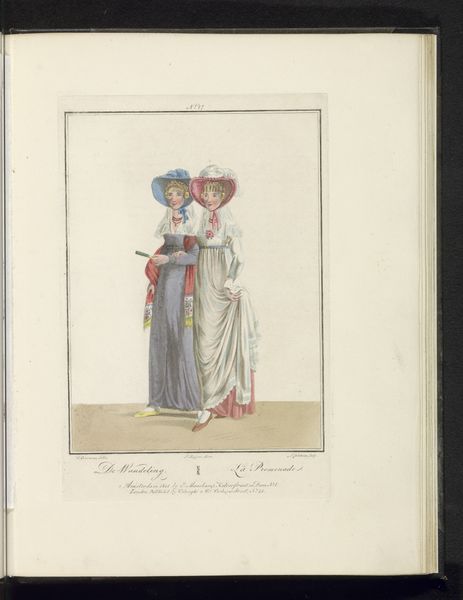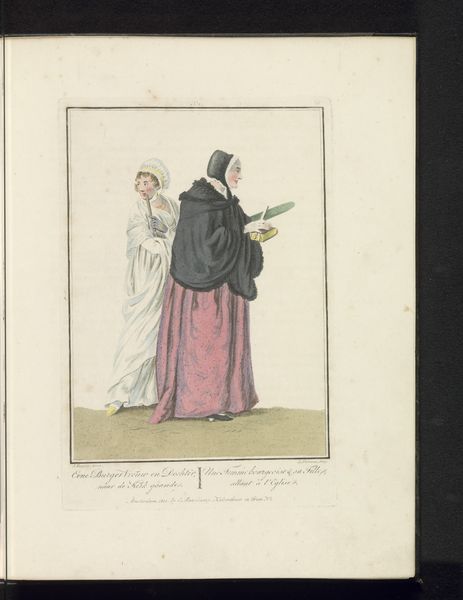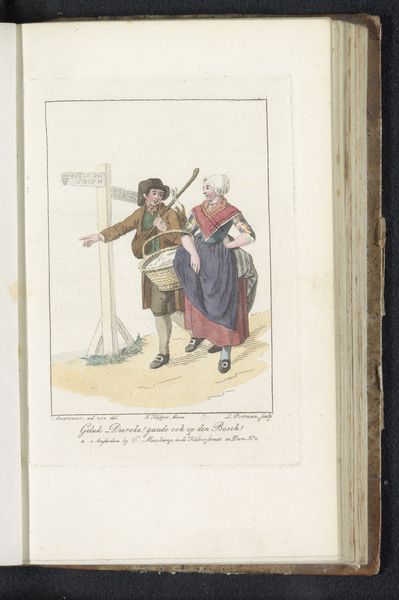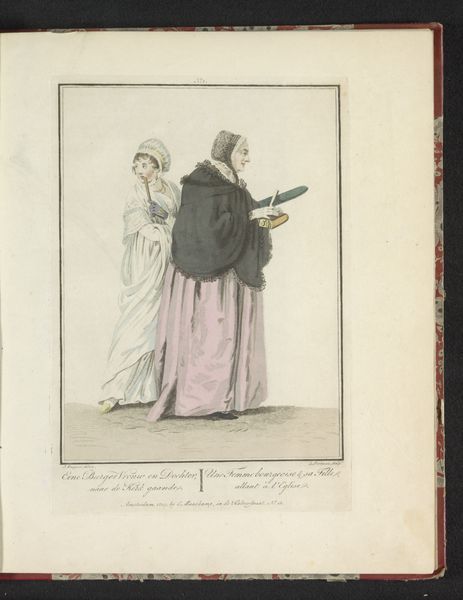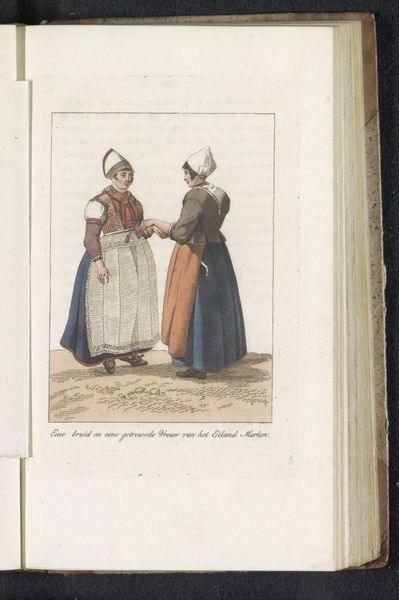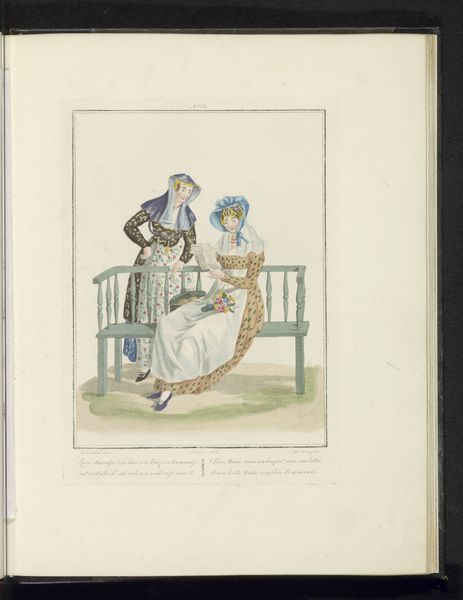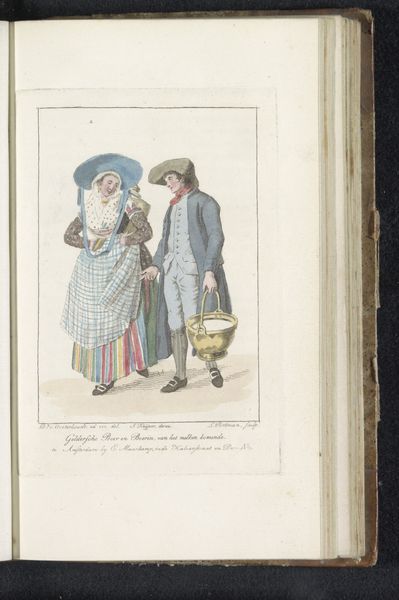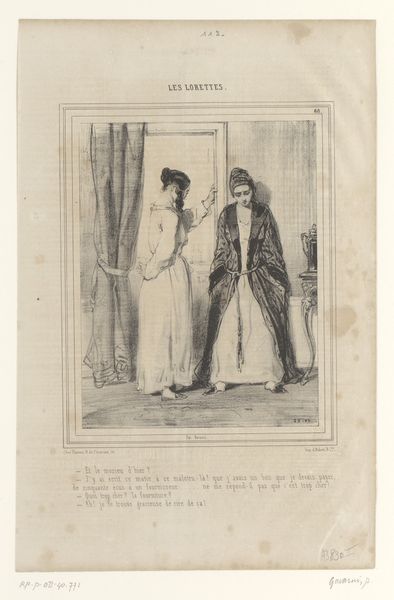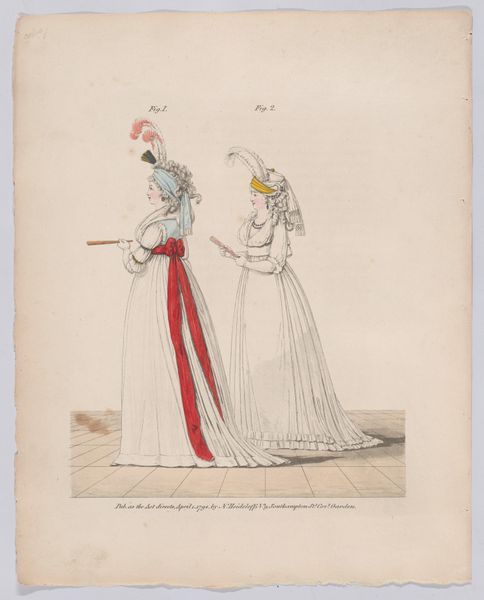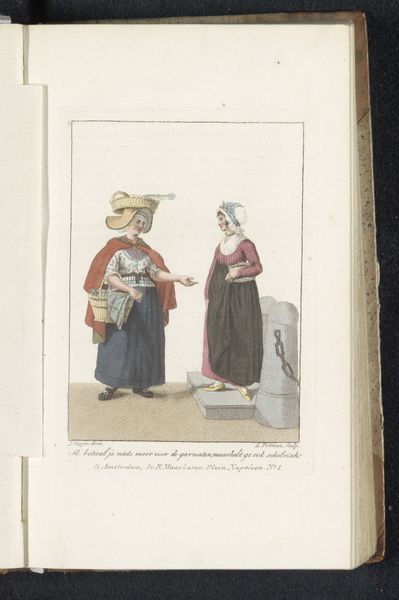
drawing, coloured-pencil, watercolor
#
portrait
#
drawing
#
coloured-pencil
#
watercolor
#
coloured pencil
#
romanticism
#
costume
#
genre-painting
#
watercolor
Dimensions: height 124 mm, width 90 mm
Copyright: Rijks Museum: Open Domain
Editor: This is "Twee meisjes uit Noord-Holland" or "Two Girls from North Holland" by Ludwig Gottlieb Portman, created around 1806. It's a drawing with colored pencil and watercolor, and I find the depiction of their clothing so striking – they seem to embody both modesty and a subtle display of status. What do you make of this work? Curator: It’s fascinating to consider this piece within the social and political context of the early 19th century. These girls, likely from a privileged background, are being presented within the framework of genre-painting, almost as ethnographic studies. Note how their regional costumes become signifiers of identity, but also perhaps of class and cultural expectation. Consider the gaze; do you sense an element of performance? Are they aware of being observed, of representing "North Holland?" Editor: I hadn’t thought of that performative aspect before, but it makes sense. The detail in their costumes almost feels like a deliberate display. It also reminds me a bit of other works from the Romantic period which also seem obsessed with folklore, history, and tradition. Curator: Exactly! Romanticism wasn’t just about idealizing nature; it also involved constructing narratives around national and regional identities. Portman, through his careful rendering, engages in this process of cultural construction, where identity, particularly for women, becomes intertwined with expectations and visibility. This work might subtly be asking: what does it mean to perform womanhood within the confines of regional and national identity? And for whom is this performance intended? Editor: I guess it also highlights the complex relationship between identity and representation. It is helpful to consider the sociopolitical landscape of that era in order to realize what the artist might have wanted to say. I see so many things I missed at first glance! Curator: Indeed! Engaging with art in this way reveals that these "simple" images are full of commentary on the intersectional influences behind identity construction. Hopefully, that empowers us to think critically not only about history but also our present.
Comments
No comments
Be the first to comment and join the conversation on the ultimate creative platform.
